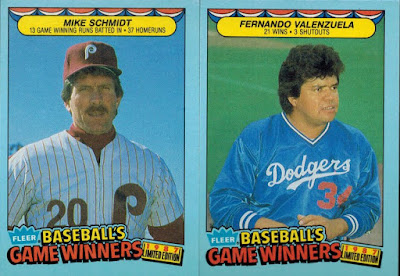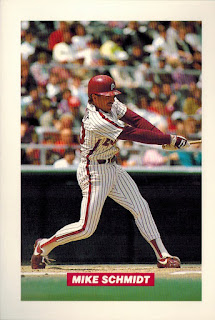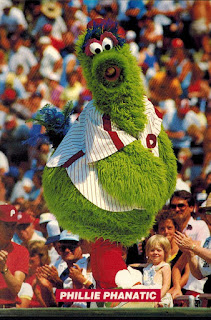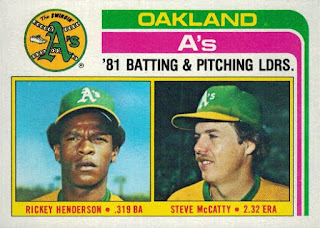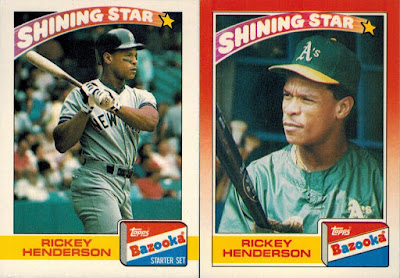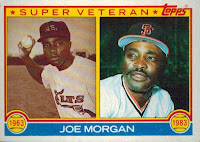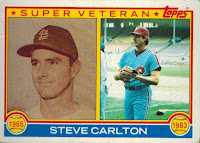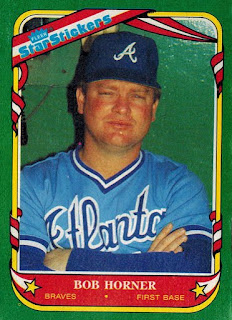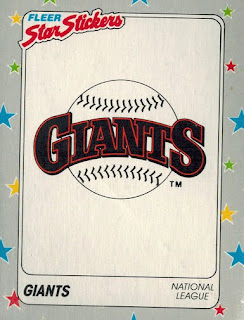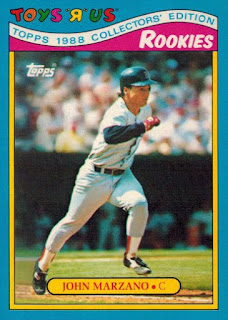 |
| 1987 Topps Glossy Mini League Leaders Checklist, with cards checked off. |
I posted before, in
one of the early posts of this blog, about an unopened box of 1986 Topps Glossy Mini League Leaders. I must have bought two or three boxes of those from 1986, because I have many of the cards opened as well. For 1987, I only have a couple dozen cards, and I'm featuring a few of them here today.
1987 was the year that I started seriously collecting baseball cards, and the catalysts for this were probably a lot of unsupervised time in the neighborhood, with which I could ride my bike (or walk) to the local 7-Eleven and buy, for a few cents, packs of 1987 Topps, and also the fact that there were other kids in the neighborhood interested in doing the same. There was a local card shop, Stale Gum, in town, and I got my parents to take me there sometimes. I also was on the lookout at any store we entered for baseball cards, and back then, there were many to be found. So I don't know where exactly I picked up these minis, but opportunities abounded.
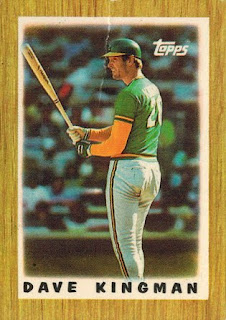 |
| Dave Kingman. |
|
 |
| Dave Kingman card back. |
|
The condition on these -- you can see that I marked the checklist, and you can see that this Dave Kingman has a big crease down the middle -- indicates that I got these early on in my serious collecting days. It took me a little while to figure out how to take care of my cards, and these cards paid the price.
Enough reminiscing about becoming a collector -- on to the cards themselves. Kingman here is at the end of his career, but still placed #2 in the AL home run race in 1986, with 35. The lifetime stats at the bottom of the card are his career totals.
 |
| John Cangelosi. |
In his first year in the majors, John Cangelosi earned entrance to this set by tying for second in the AL in stolen bases with 50. Cangelosi was traded to the Pirates and spent 1987-1990 with them, in the Pirates drive to the postseason which resulted in the first of three straight NL East titles in 1990. He later played for a number of teams, including winning the World Series with the 1997 Marlins.
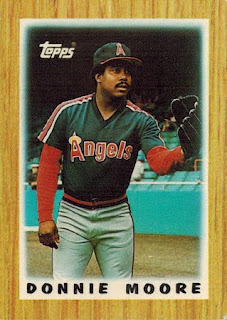 |
| Donnie Moore. |
Donnie Moore placed fifth in the AL in saves in 1986 with 21. Moore pitched in the majors from 1975 through 1988 with the Cubs, Cardinals, Brewers, Braves, and Angels, compiling a career record of 43-40 with 89 saves.
 |
| Rick Rhoden. |
Rick Rhoden was the ace of the Pirates staff in some of their fallow years, inbetween the 1979 World Series win and the 1990 NL East title. For 1986, for example, he led the Pirates' pitching staff with a 15-12 record, while the other starters went 9-16 (Rick Reuschel), 6-11 (Mike Bielecki), and 6-8 (Bob Kipper). Larry McWilliams and Bob Walk also started 15 games each that season, with records of 3-11 and 7-8, respectively. Rhoden is included in this set for tying for 2nd in complete games with 12 and for placing 4th in the NL in ERA with 2.84. At the end of the 1986 season, he was traded to the Yankees in the deal that brought future NL Cy Young winner Doug Drabek to Pittsburgh, a deal that worked nicely for the Bucs.
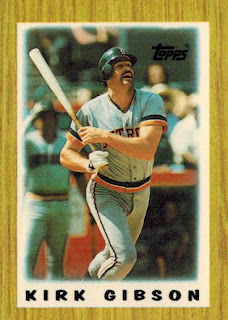 |
| Kirk Gibson. |
Here we have Kirk Gibson a few years before his World Series heroics. The slugger is included here for tying for 4th in the AL in stolen bases, with 34. He hit 28 home runs and had 86 RBI in 1986, and was also 9th in the AL in slugging percentage.
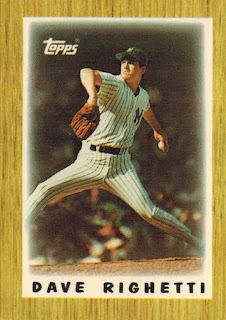 |
| Dave Righetti. |
Dave Righetti is unsurprisingly here for leading the AL in saves in 1986. That is, if you're familiar with the 1987 Topps set, it should be unsurprising, because his 1987 Topps Record Breaker card shows that he set the major league record for saves in a season with 46. He also placed second in the AL in games pitched with 74.
 |
| Dwight Gooden. |
To close out this post, we have Dwight Gooden, who doing well enough in 1986 as the Mets won the World Series. The card back shows that he tied for second in the NL in complete games with 12, tied for 4th in the NL in strikeouts with 200, placed fifth in ERA with 2.84, tied for 5th in wins with 17 and tied for 5th in shutouts with 2. Gooden's decline after this point is well-documented.
It turns out that I have a small number of 1988 Glossy Mini League Leaders, and a small number from 1989, and a whole opened box from 1990. I'll feature some from those years in future posts.

